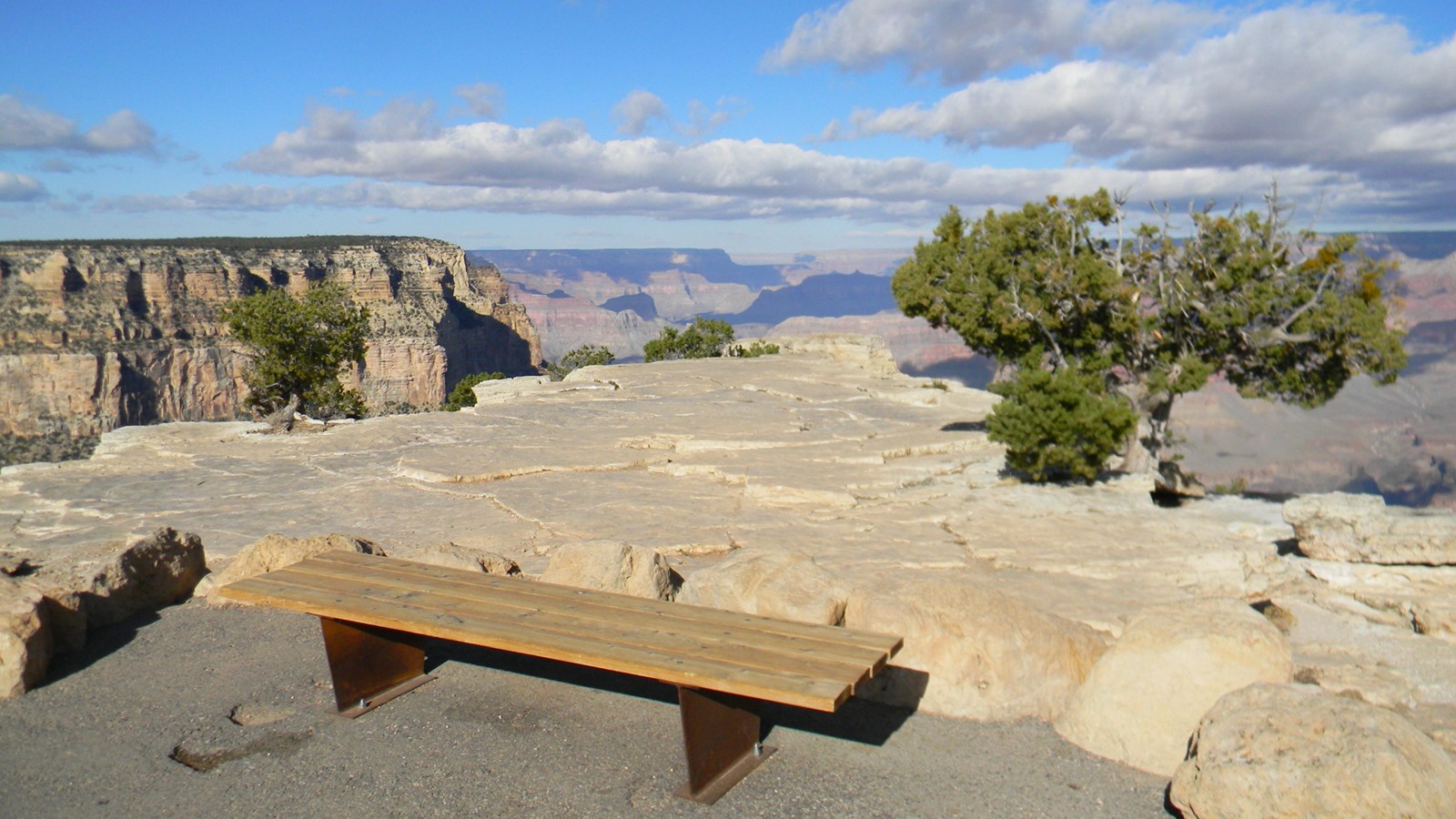Last updated: October 10, 2024
Place
Grandeur Point

NPS/Joel Kane
Audio Description, Benches/Seating, Scenic View/Photo Spot
This location offers one of the better views of the layers and depths of the canyon in the area around Grand Canyon Village. It also provides especially fantastic aerial views of the switchbacks on the upper and middle portions of Bright Angel Trail, as well as a view of 3-Mile Resthouse far below. Grandeur Point is a popular stop along the Rim Trail between Grand Canyon Visitor Center and the Village, as well as a popular spot for sunset that is often less crowded and more easily accessible spots like Mather, Lipan, or Hopi Points.
Grandeur Point is located along the Rim Trail about 0.5 miles (0.8 km) west of Yavapai Point and Yavapai Geology Museum. It can also be reached via Parking Lot A and Park Headquarters by following the paved trail past McKee Amphitheater and out to the Rim Trail. After following this path for 0.4 miles (0.6 km), turn right and follow the Rim Trail east for nearly 0.5 miles (0.8 km). The view is worth the walk!
Geology
Grandeur Point offers an especially dramatic view of Bright Angel Canyon, which slices directly across Grand Canyon and cuts deep into both the South and North Rims. Grand Canyon Village sits near the southern head of this massive side canyon, which has formed along a geologic structure known as the Bright Angel Fault. Many faults, large and small, cut the rock layers of Grand Canyon, but the Bright Angel Fault is probably the most famous. Movement of rocks along this fault has created a major conduit for water flowing down to the Colorado River, including Garden Creek from the South Rim (fed by springs at Indian Garden, far below) and Bright Angel Creek from the North Rim (fed by Angel Spring and Roaring Springs, the source of all drinking water within the park). Since movement along faults causes breaks in the shear cliffs of Grand Canyon, they often serve as access points for trails descending from the canyon rims. Where the switchbacks of the Bright Angel Trail descend through the break in the shear cliff of tan Coconino Sandstone several hundred feet below the rim, one can clearly observe the offset along the Bright Angel Fault. The displacement along this portion of the fault is about 200 feet (60 m), with the western side of the fault uplifted relative to the eastern side. However, this normal displacement along the Bright Angel Fault represents only the most recent chapter of its long history; like other major faults in Grand Canyon, the Bright Angel Fault traces its origin back to the formation of the proto-North American continent about 1.7 billion years ago. Since its initial formation, the Bright Angel Fault has been reactivated several times, sometimes as a normal fault (such as it is now) and sometimes as a reverse and/or strike-slip fault.
